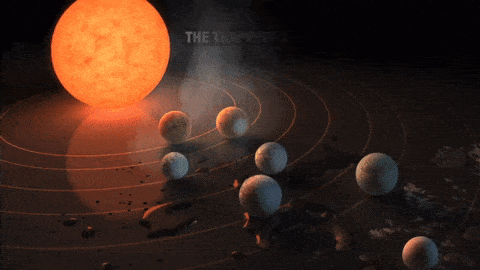
Uranus & Neptune
Quiz
•
Science
•
8th - 12th Grade
•
Medium
+2
Standards-aligned

Clint Sandford
Used 152+ times
FREE Resource
20 questions
Show all answers
1.
MULTIPLE CHOICE QUESTION
45 sec • 1 pt

The spin of Uranus' rotational axis is almost ___ to the ecliptic.
perpendicular
parallel
upside down
directly aligned
2.
MULTIPLE CHOICE QUESTION
45 sec • 1 pt

The gas element ___ is responsible for the overall colors of both Uranus & Neptune.
methane
hydrogen
helium
nitrogen
Tags
NGSS.MS-PS1-1
3.
MULTIPLE CHOICE QUESTION
45 sec • 1 pt

The rings of Uranus were first discovered by using this method in 1977.
stellar occultation
eclipsing moons
stellar parallax
telescopic zoom in
4.
MULTIPLE CHOICE QUESTION
1 min • 1 pt

Uranus' orbital period is 84 years. Uranus has orbited the Sun ___ since its discovery in 1781.
once
twice
just over five times
just over two & a half times
Tags
NGSS.MS-ESS1-2
5.
MULTIPLE CHOICE QUESTION
1 min • 1 pt

Uranus & Neptune are also known as the "ice giants" due to
their icy moons.
the very cold atmospheres of each planet.
their mantle composition.
the lack of a rocky core.
6.
MULTIPLE CHOICE QUESTION
1 min • 1 pt

The "sideways" orientation of Uranus' axis gives the planet
extreme seasonal effects.
a very strong magnetic field.
its mostly blue color.
its second-most extensive ring system.
7.
MULTIPLE CHOICE QUESTION
1 min • 1 pt

The atmosphere of Uranus appeared to be ___ - when Voyager II flew by in 1986.
very active like Jupiter's
almost non-existent
very bland due to seasonal variations
incredibly stormy
Create a free account and access millions of resources
Create resources
Host any resource
Get auto-graded reports

Continue with Google

Continue with Email

Continue with Classlink

Continue with Clever
or continue with

Microsoft
%20(1).png)
Apple
Others
By signing up, you agree to our Terms of Service & Privacy Policy
Already have an account?
Similar Resources on Wayground

15 questions
Solar System Trivia
Quiz
•
10th Grade

18 questions
The Outer Planets
Quiz
•
9th - 12th Grade

15 questions
Planets and Space
Quiz
•
4th Grade - University

20 questions
Space Quiz
Quiz
•
9th - 12th Grade

20 questions
Astronomy by Sakarya Bilsem
Quiz
•
3rd - 8th Grade

18 questions
Planets in the Solar System
Quiz
•
6th - 8th Grade

15 questions
Solar System
Quiz
•
6th - 8th Grade

16 questions
Solar System STEMscopes
Quiz
•
6th - 8th Grade
Popular Resources on Wayground

20 questions
Brand Labels
Quiz
•
5th - 12th Grade

10 questions
Ice Breaker Trivia: Food from Around the World
Quiz
•
3rd - 12th Grade

25 questions
Multiplication Facts
Quiz
•
5th Grade

20 questions
ELA Advisory Review
Quiz
•
7th Grade

15 questions
Subtracting Integers
Quiz
•
7th Grade

22 questions
Adding Integers
Quiz
•
6th Grade

10 questions
Multiplication and Division Unknowns
Quiz
•
3rd Grade

10 questions
Exploring Digital Citizenship Essentials
Interactive video
•
6th - 10th Grade
Discover more resources for Science

20 questions
Physical and Chemical Changes
Quiz
•
8th Grade

22 questions
Newton's Laws of Motion
Lesson
•
8th Grade

20 questions
Distance Time Graphs
Quiz
•
6th - 8th Grade

21 questions
Balanced and Unbalanced Forces
Quiz
•
8th Grade

17 questions
Energy Transformations
Quiz
•
6th - 8th Grade

10 questions
Exploring Newton's Laws of Motion
Interactive video
•
6th - 10th Grade

17 questions
Thermal Energy Transfer
Lesson
•
6th - 8th Grade

7 questions
4.4 Fossils
Quiz
•
8th Grade



